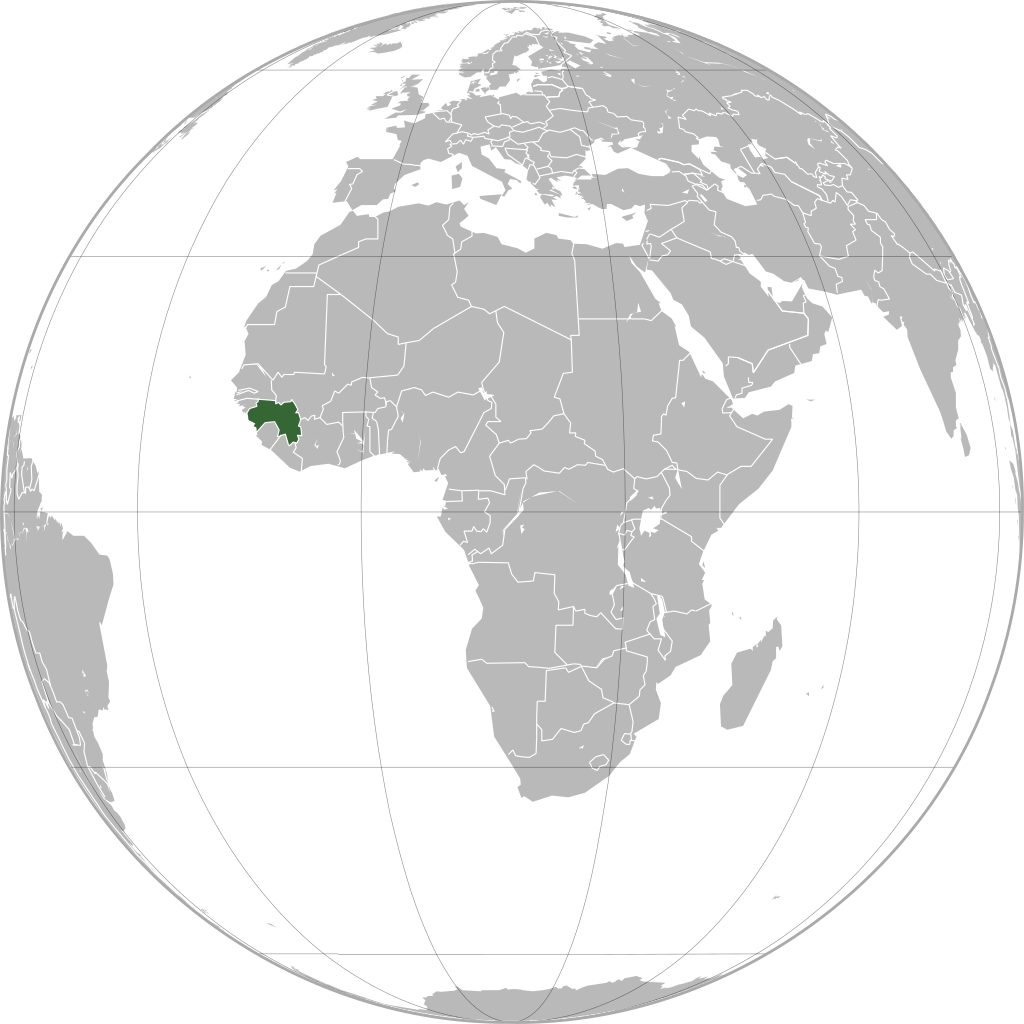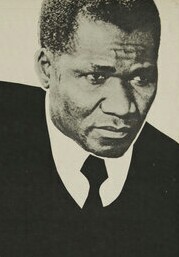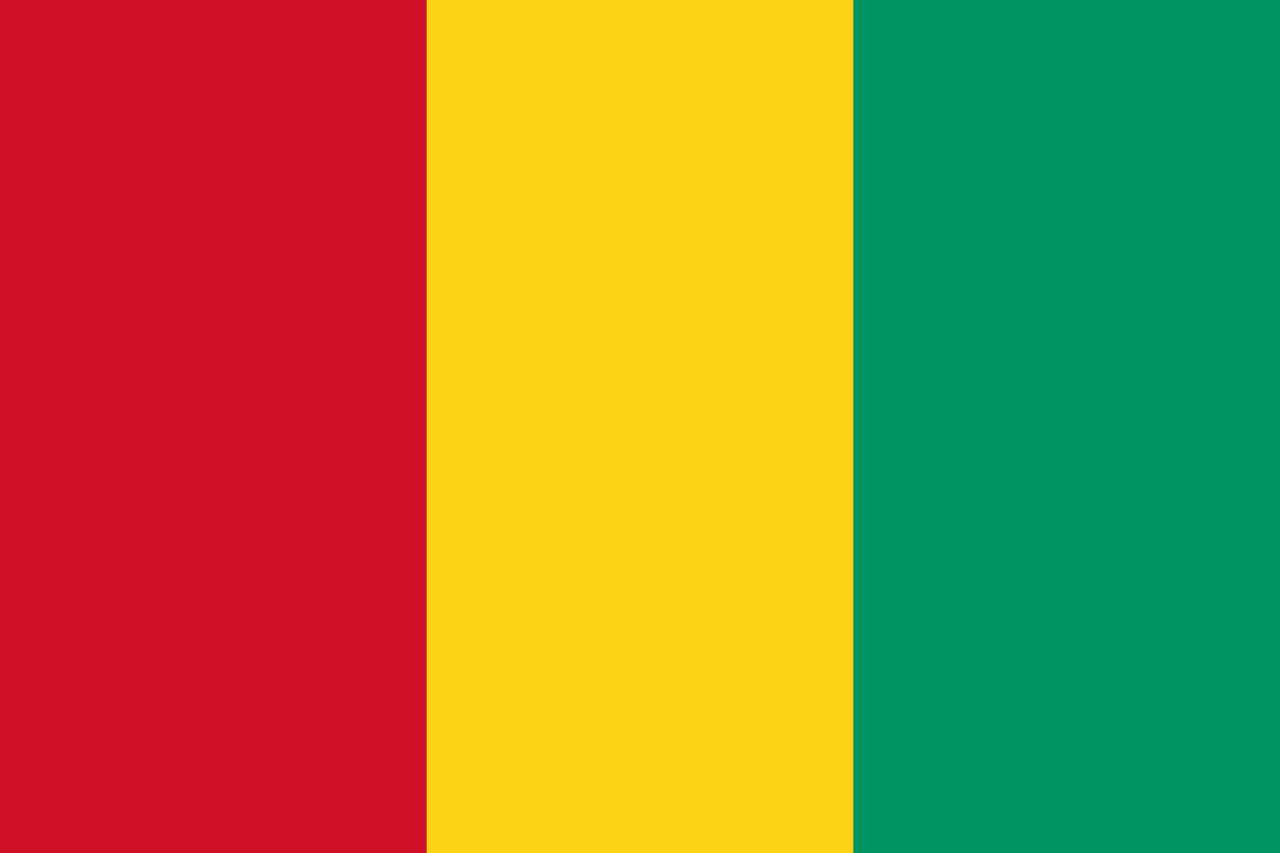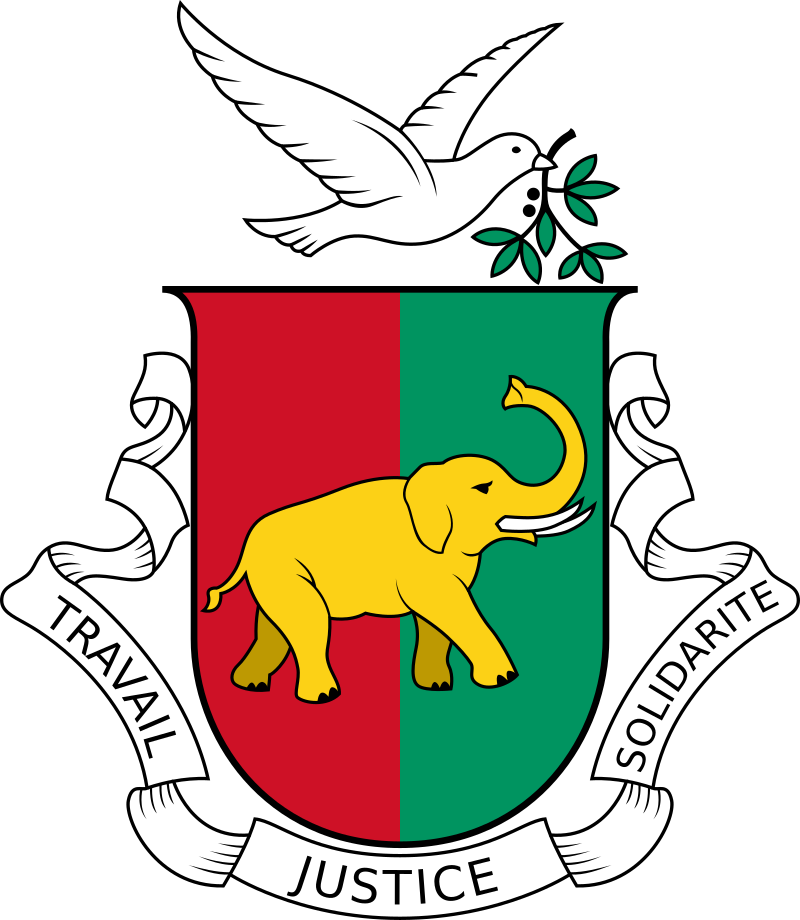People's Revolutionary Republic of Guinea (1958–1984): Difference between revisions
More languages
More actions
(fixed formatting errors) Tag: Visual edit |
(Foreign relations) Tag: Visual edit |
||
| Line 25: | Line 25: | ||
=== Portuguese Colonial War === | === Portuguese Colonial War === | ||
Under the leadership of the Democratic Party, Guinea played an active role in the national liberation of Guinea-Bissau by housing and supplying the [[African Party for the Independence of Guinea and | Under the leadership of the Democratic Party, Guinea played an active role in the national liberation of Guinea-Bissau by housing and supplying the [[African Party for the Independence of Guinea and Cape Verde]] (PAIGC). Amilcar Cabral and his staff were headquartered in the Conakry, where they organized and strategized their revolution away from front-lines. This safety was nearly compromised during [[Operation Green Sea]], in which Portuguese forces [[Guinean National Liberation Front]] (FLNG) elements launched an amphibious invasion of Conakry in an attempt to assassinate [[Amílcar Cabral|Cabral]] and [[Kwame Nkrumah|Nkrumah]], as well as depose Sekou Touré's socialist government and install exiled opposition leader [[Siridiou Diallo]] who was living in exile in Paris. During the invasion, the PAIGC headquarters in Conakry was destroyed, Portuguese POWs were released and Nkrumah's villa was bombed; however the Portuguese Army was repelled before they could complete their major objectives. Despite the retreat of Portuguese forces, fighting between FLNG and Guinean government forces ensued, eventually resulting in the defeat of the FLNG and the arrest and torture of those captured. Guinean support for PAIGC activities in the country continued until the end of the [[Portuguese Colonial War]] in the event of the [[Carnation Revolution]].<ref>[https://aaprp-intl.org/50th-anniversary-22-november-1970-operacao-mar-verde/ 50th Anniversary 22 November 1970 “Operação Mar Verde”]</ref><ref>[https://hoodcommunist.org/2023/04/20/the-relationship-between-sekou-toure-and-amilcar-cabral/ The Relationship Between Sekou Touré and Amilcar Cabral]</ref> | ||
== Government == | == Government == | ||
| Line 52: | Line 52: | ||
== Administrative divisions == | == Administrative divisions == | ||
== Foreign relations == | |||
In 1959, [[People's Republic of China|China]] began providing technical assistance and [[interest]]-free loans to Guinea.<ref name=":1222">{{Citation|author=[[Vijay Prashad]]|year=2008|title=The Darker Nations: A People's History of the Third World|chapter=Notes|page=300|pdf=https://cloudflare-ipfs.com/ipfs/bafykbzaceascnzh26r5d6uitjjs2z7rflhaxlt7rboz5whzdf76qg6xxvecqq?filename=%28A%20New%20Press%20People%27s%20history%29%20Vijay%20Prashad%20-%20The%20darker%20nations_%20a%20people%27s%20history%20of%20the%20third%20world-The%20New%20Press%20%282008%29.pdf|publisher=The New Press|isbn=9781595583420|lg=https://libgen.rs/book/index.php?md5=9B40B96E830128A7FE0E0E887C06829F}}</ref> | |||
== Economy == | == Economy == | ||
Revision as of 18:46, 30 June 2023
| People's Revolutionary Republic of Guinea | |
|---|---|
| 1958–1984 | |
Motto: Work, Justice, Solidarity | |
Anthem: Freedom | |
 | |
| Capital and largest city | Conakry |
| Official languages | French |
| Dominant mode of production | Socialism |
| Government | Unitary semi-presidential party-state |
• President and Secretary General of the PDG-RDA | Sékou Touré |
• Prime Minister | Louis Lansana Beavogui |
| Legislature | National Assembly |
| History | |
• Established | 1958 |
• Dissolution | 1984 |
| Population | |
• 1985 estimate | 5,470,716 |
| Currency | 1959 -1971: Guinean Franc 1971-1985: Guinean Syli |
The People's Revolutionary Republic of Guinea, commonly known as Guinea, was a socialist state in West Africa from 1958 to 1984 established by Sekou Touré following the rejection of the French Community during the 1958 constitutional referendum, paving the way for independence across West Africa.
Since independence, Guinea was subjected to numerous destabilization campaigns from western powers, among which were operations Persil and Green Sea. Despite this, the Democratic Party of Guinea was able to maintain power and continued to send aid to liberation movements across Africa. After the passing of Ahmed Sekou Touré, Interim President Louis Beavogui was overthrown by military forces in 1984, resulting in the restoration of capitalism.
History
1958 constitutional referendum
After the successful unionization of African laborers by Sekou Touré, the creation of the Federation of Workers’ Union of Guinea and the execution of labor strikes to advance African civil rights in Guinea, Sekou Touré used his position in Guinea's worker federations and the Democratic Party to push for total independence during the 1958 constitutional referendum. This refusal to become an autonomous subject to France led to the mass destruction of infrastructure in the country by France in an attempt to make an example out of Guinea, which severely limited its economic progression post-independence. Substantial political and financial assistance from the Republic of Ghana helped the Guinean government rebuild the country.[1]
Portuguese Colonial War
Under the leadership of the Democratic Party, Guinea played an active role in the national liberation of Guinea-Bissau by housing and supplying the African Party for the Independence of Guinea and Cape Verde (PAIGC). Amilcar Cabral and his staff were headquartered in the Conakry, where they organized and strategized their revolution away from front-lines. This safety was nearly compromised during Operation Green Sea, in which Portuguese forces Guinean National Liberation Front (FLNG) elements launched an amphibious invasion of Conakry in an attempt to assassinate Cabral and Nkrumah, as well as depose Sekou Touré's socialist government and install exiled opposition leader Siridiou Diallo who was living in exile in Paris. During the invasion, the PAIGC headquarters in Conakry was destroyed, Portuguese POWs were released and Nkrumah's villa was bombed; however the Portuguese Army was repelled before they could complete their major objectives. Despite the retreat of Portuguese forces, fighting between FLNG and Guinean government forces ensued, eventually resulting in the defeat of the FLNG and the arrest and torture of those captured. Guinean support for PAIGC activities in the country continued until the end of the Portuguese Colonial War in the event of the Carnation Revolution.[2][3]
Government
Concept of the party state
As formulated by Ahmed Sekou Touré, the Party State is the merging of the administrative functions of society with the vanguard party; thus entrenching the revolution in all aspects of public policy and solidifying a monopoly of political power within the vanguard.
Local Revolutionary Authorities
The basic committee is the Local Revolutionary Authority (PRL), whose executive is composed of the Mayor, the Deputy Mayor, the four directors of the local authorities and the chairwoman of the Special Women’s Committee. The Mayor is the chair of the PRL executive and is tasked with the organization and supervision of the the activities of local authorities. The general duties of the Mayor is the maintenance of economic and legal discipline, presenting and managing the PRL budget, and safeguarding the PDG's monopoly of political power. Among their duties of signing marriage and death certificates, they are also police officers and preside at sessions of the People's Court. In the event of the mayor's absence, the Deputy Mayor takes his/her place and assumes authority over his/her duties.[4]
The PRL executive is divided up into the authorities of administration, economy, public works and communications, and social affairs. The local administrative authorities were in charge of managing the flow of information and the press, carrying out the local census, maintaining and managing local archives, organizing PDG and PRL meetings, as well as keeping track of records ranging from births, deaths, marriages and judicial proceedings. The local economic authorities managed the production, marketing and fair distribution of all goods and services. Local authorities for public works and communications were tasked with the development and regulation of all postal services and telecommunications. Last are the local authorities for social affairs, which were responsible for the Revolutionary Education Centers (CER) of the PRL, literacy training, scientific experimentation, social assistance, funeral services, maintaining cemeteries, as well as organizing and supervising events surrounding sports, culture and art.[4]
Each PRL authority was chaired by a Chief Officer, who would be assisted by a technical work committee. Technical work committee members would be nominated by the chief officers of said authority and appointed by the Mayor. Technical work committees were then divided into numerous, specific, subcommittees.[4]
Ran under the association of the PRLs were the special youth and women's committees, which were tasked with organizing youth and empowering women in Guinean political society. Within each local garrison contained a Military Committee (CUM), which was the basic political organization corresponding to the PRLs. This was done as a means of tightening the grip of the PDG on the Guinean Army, thus completing Sekou Touré's Party State.[4]
Party sections
Comprising of several PRLs, the sectional level is the second stage of organization of the PDG, and generally corresponded to an arrondissement. Each section contained a youth and women's committee, both of which were subordinate to the Executive Committee while the arrondissement workers' committees. were subordinate to both the Executive Committee and the Regional Workers' Committee. The sectional congress was the decision-making body and the sectional conference would make decisions between congresses.[4]
Regional Revolutionary Authorities
The Revolutionary People's Republic of Guinea was divided into 33 administrative divisions and 34 party federations. A federation was composed of a group of party sections functioning within an administrative region, of which only Conakry would contain two federations. Federations were managed by a federal executive, the members of which were elected by the congress and selected from the Chief Officers of the sectional Executive Committees and members of the outgoing federal executive. This executive has four ex officio members: the governor of the administrative region, the chairwoman of the regional women's committee, and the general secretaries of the regional committee of the Youth of the African Democratic Revolution (JRDA) and the regional workers' committee. The chief officers of party federations were known as Federation Secretaries. The decision-making bodies of the federations were the Federal Congresses, Regional Councils for the Revolution and Regional Legislative Assemblies. The functions of the Regional Revolutionary Authorities (PRR) were exercised by the PDG Federal Executives and Regional Executive Councils. Regional women's, youth, and workers' committees were integrated into the regional administrations.[4]

National level
The Party National Congress elects the Supreme Leader of the Revolution, the General Secretary of the PDG and the members of the Central Committee. The National Political Bureau (BPN) is an executive body composed of seven members elected from the members of the Central Committee. By law, the General Secretary of the PDG is the President of Guinea. The Central Committee is the legislative arm of the Democratic Party of Guinea. The national decision-making bodies are the National Congress, the National Council of the Revolution (CNR) and the Legislative Assembly. Executive power is exercised by the President of the Republic, who is the Head of State, the Central Committee (CC) and the Government. The latter is divided into seven Domains, each of which is headed by a member of the National Political Bureau. Three kinds of integrated organizations operate at national level: the national committees of the JRDA, the national women’s committees and the national workers’ committees.[4]
Administrative divisions
Foreign relations
In 1959, China began providing technical assistance and interest-free loans to Guinea.[5]
Economy
Labor Unions
Under the leadership of Democratic Party PRLs, all Guinean enterprises had a production committee (CUP), a union section or a management committee depending on the number of laborers. Workers belonged to co-operatives covering several groups of laborers. Administrative affairs of these organizations were decided by weekly general meetings. The CUPs, Union Sections and Management boards of the co-operatives maintained complete political control over businesses, authorities, companies and agencies to ensure that they were properly managed by the interests of the Democratic Party. The labor unions and production boards drew production plans to keep track of executed tasks. They were also responsible for the training and political education of workers in their units.[4]
Infrastructure
Demographics
References
- ↑ Ahmed Sékou Touré @ 100
- ↑ 50th Anniversary 22 November 1970 “Operação Mar Verde”
- ↑ The Relationship Between Sekou Touré and Amilcar Cabral
- ↑ 4.0 4.1 4.2 4.3 4.4 4.5 4.6 4.7 Cultural policy in the Revolutionary People's Republic of Guinea
- ↑ Vijay Prashad (2008). The Darker Nations: A People's History of the Third World: 'Notes' (p. 300). [PDF] The New Press. ISBN 9781595583420 [LG]


